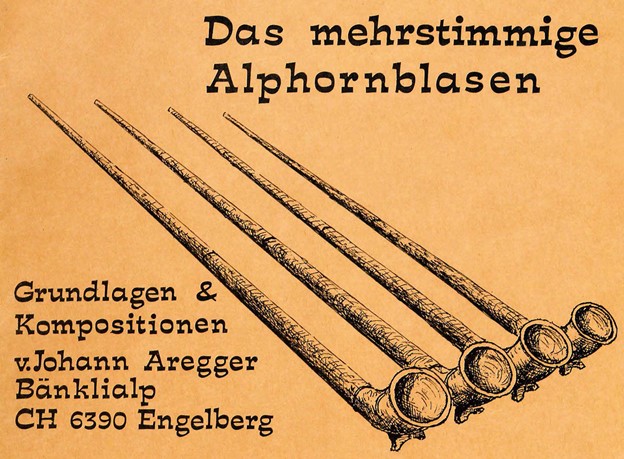by Gary Martin, edmonsalphorns.com
Varied playing
The following excerpts from Aregger’s introduction are especially instructive.
Aregger on variable performance: “Every alphorn ensemble must always strive to create varied playing with the few available possibilities, not in such a way that the listener gets the feeling that one is always playing the same piece.” It is not clear precisely what limitations Aregger has in mind with “the few available possibilities.” One surmises that note pitch and length are to be preserved. Tempo, dynamics and phrasing might be elements of individual interpretation.
“Following are some examples, all of which can be played as a duet, trio, quartet. Do not play through these pieces too slowly. A flowing, yet refined playing will certainly make our beautiful instrument even more popular.”
Score layout
Aregger’s score layout is ingenious. Using 3 staves Aregger provides several options for multipart playing. The staves are:
Staff 1: Trio
Staff 2: Bass
Staff 3: Duet
The Bass line in Staff 2 can be combined with Staff 1 to form a Quartet, or with the Duet in Staff 3 to form an alternate Trio.
The Duet on Staff 3 is not simply the top two voices of the Trio on Staff 1. The top voice is identical in Staff 1 and Staff 3 and may be played as a solo. In some cases a solo part may require some adaptation or may not be possible at all, especially when lower voices enter in stair-step fashion.
The score for “Uf dä Bänklialp” is illustrative for Aregger’s multi-score presentation of multi-part alphorn playing. Aregger’s original layout:
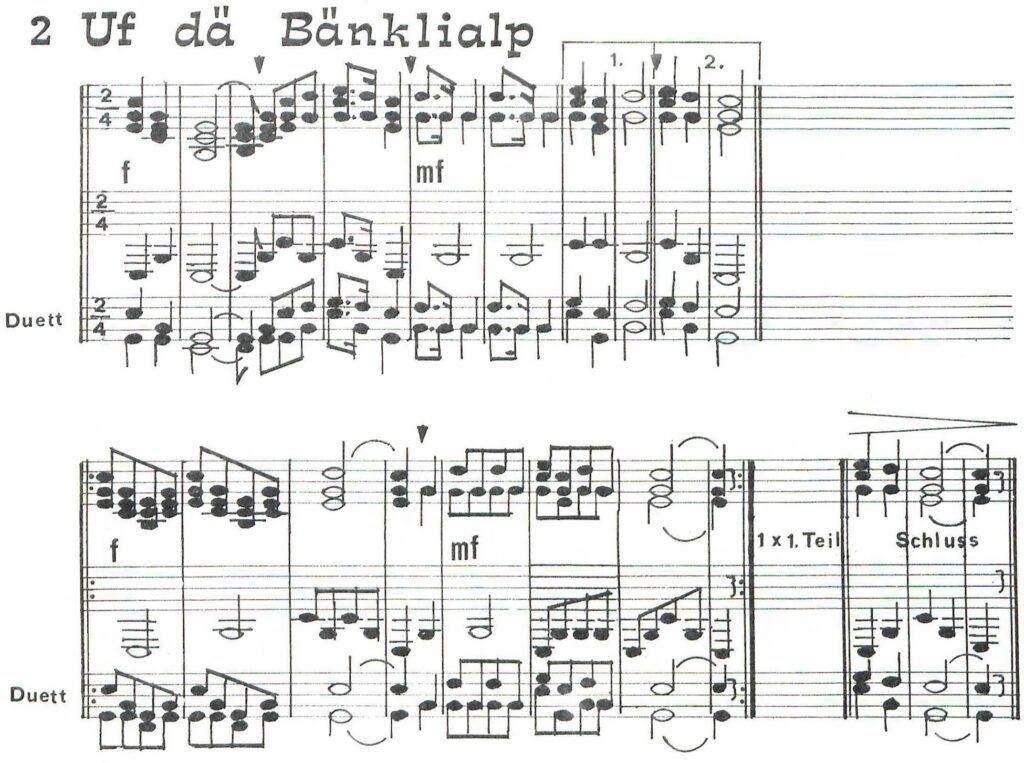
A solo as the top voice of Staff 1 or Staff 3 appears in reset layout as follows:

The Duet on Staff 3 appears as:

The Trio on Staff 1 appears as:
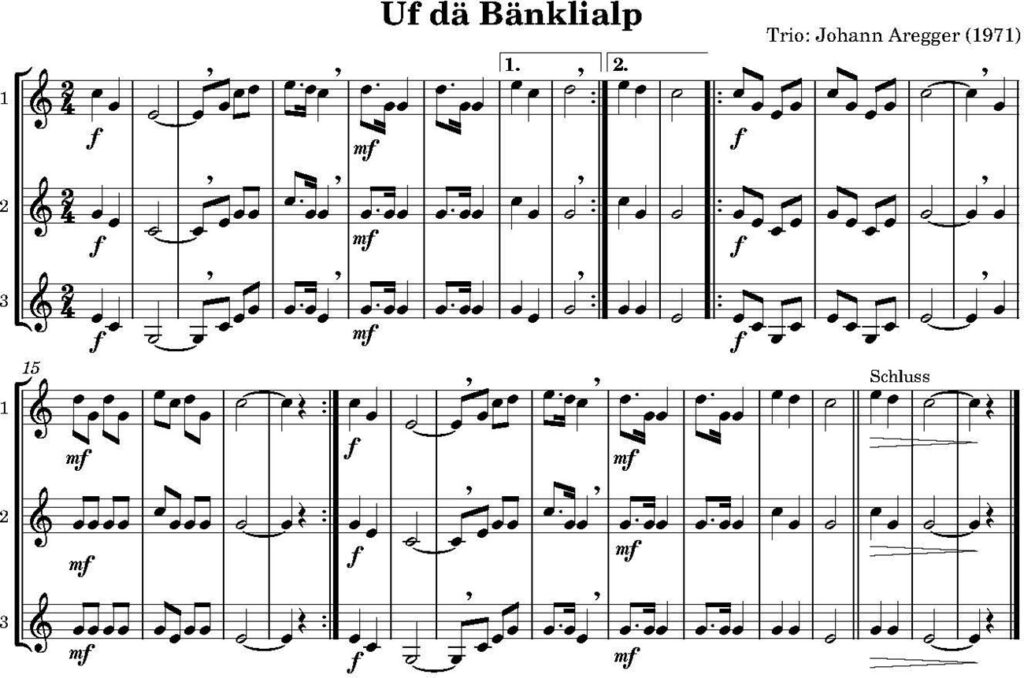
An alternate Trio combining the Duet on Staff 3 with the Bass on Staff 2:
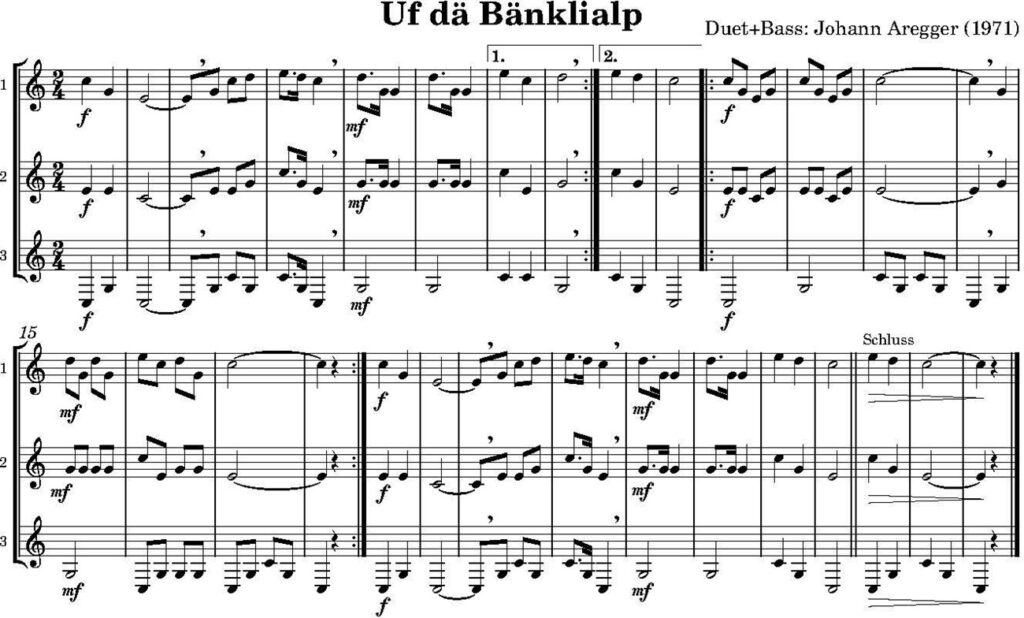
The Quartet combines the Trio in Staff 1 with the Bass in Staff 2:
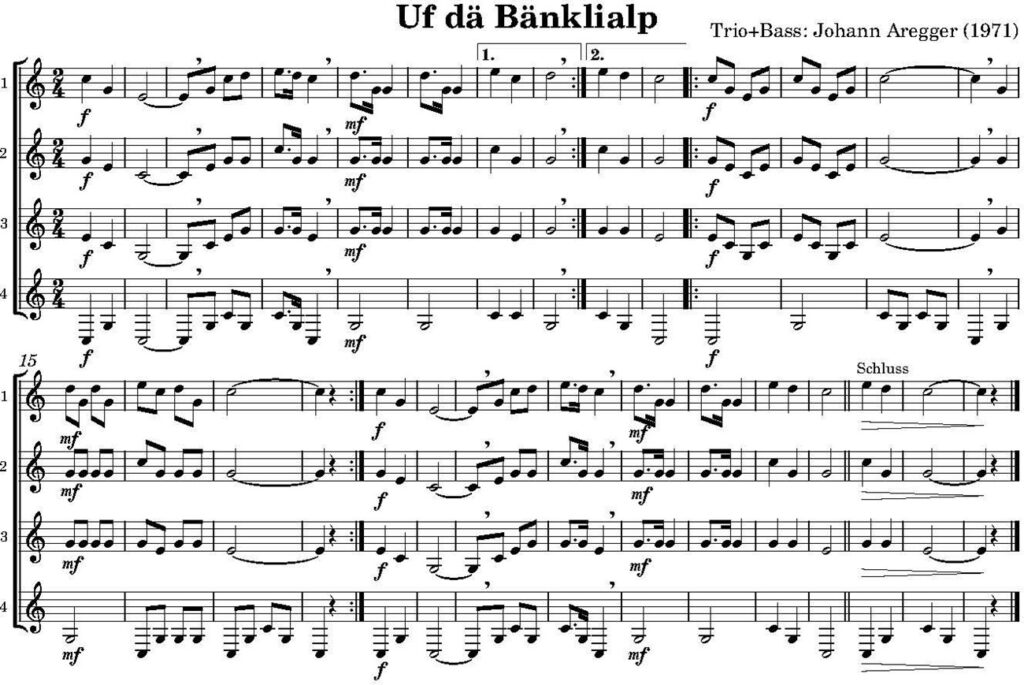
This score provides an illustration of variable performance practice. Aregger’s dynamics reflect an alternating pattern of 4 bars played f, followed by 4 bars played mf. In every score I have seen, bar 5 is played f (or mf) and the following bar 6 containing the identical notes is played mf (or p) as an echo of bar 5. In fact, this seems to be the “rule” nowadays. It should be noted that while Aregger would not likely be disturbed by this non-adherence to his own dynamic markings, a “rule” that bar 6 must echo bar 5 would not be in keeping with his emphasis on varying each performance so that one does not get “the feeling that one is always playing the same piece.”
When multiple copies of an alphorn piece are circulated with different numbers of parts, one often wishes to know how “the original” appeared. In the case of Aregger’s pieces in this booklet, the question of whether Aregger originally composed 1-part, 2-part, 3-part or 4-part scores can be unequivocally answered: “Yes!” 😊
In the scores provided for download here, it will be noted when limitations or adaptations are needed for a particular piece or a particular multipart arrangement.
